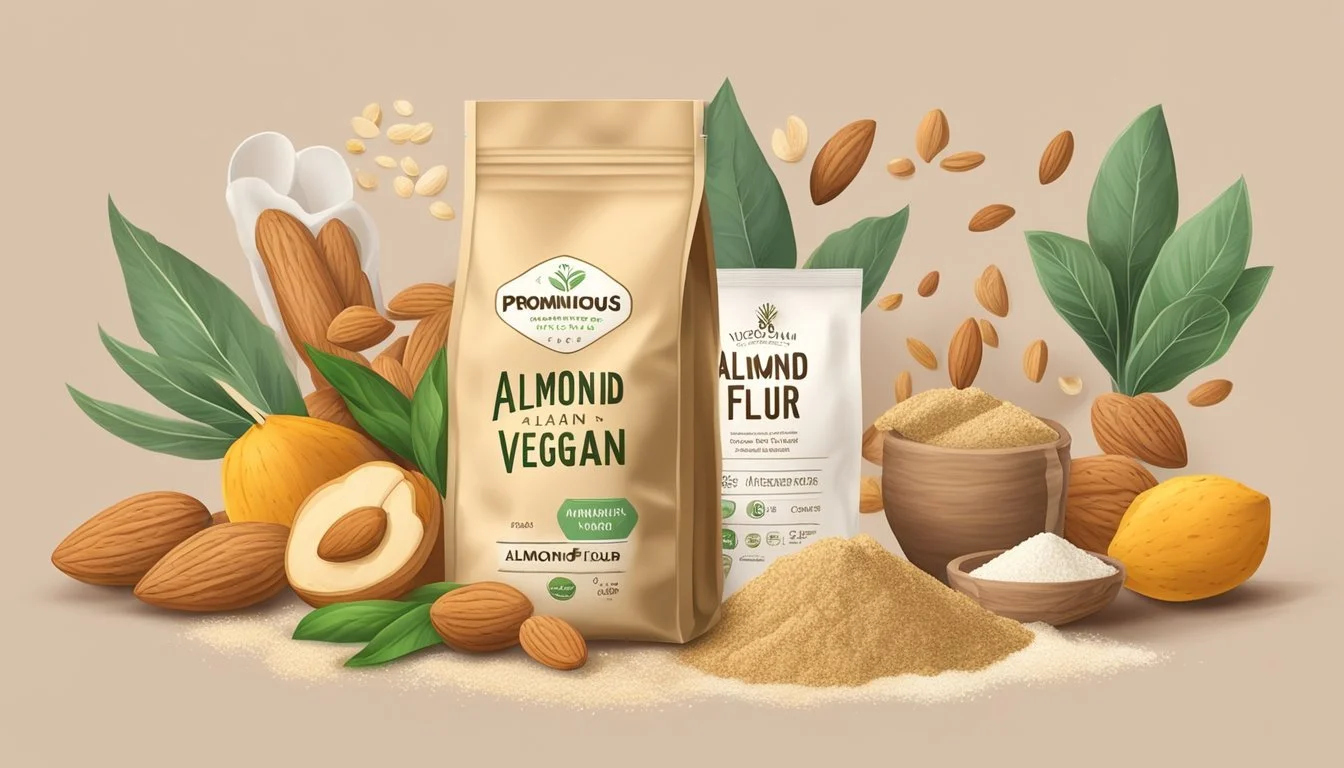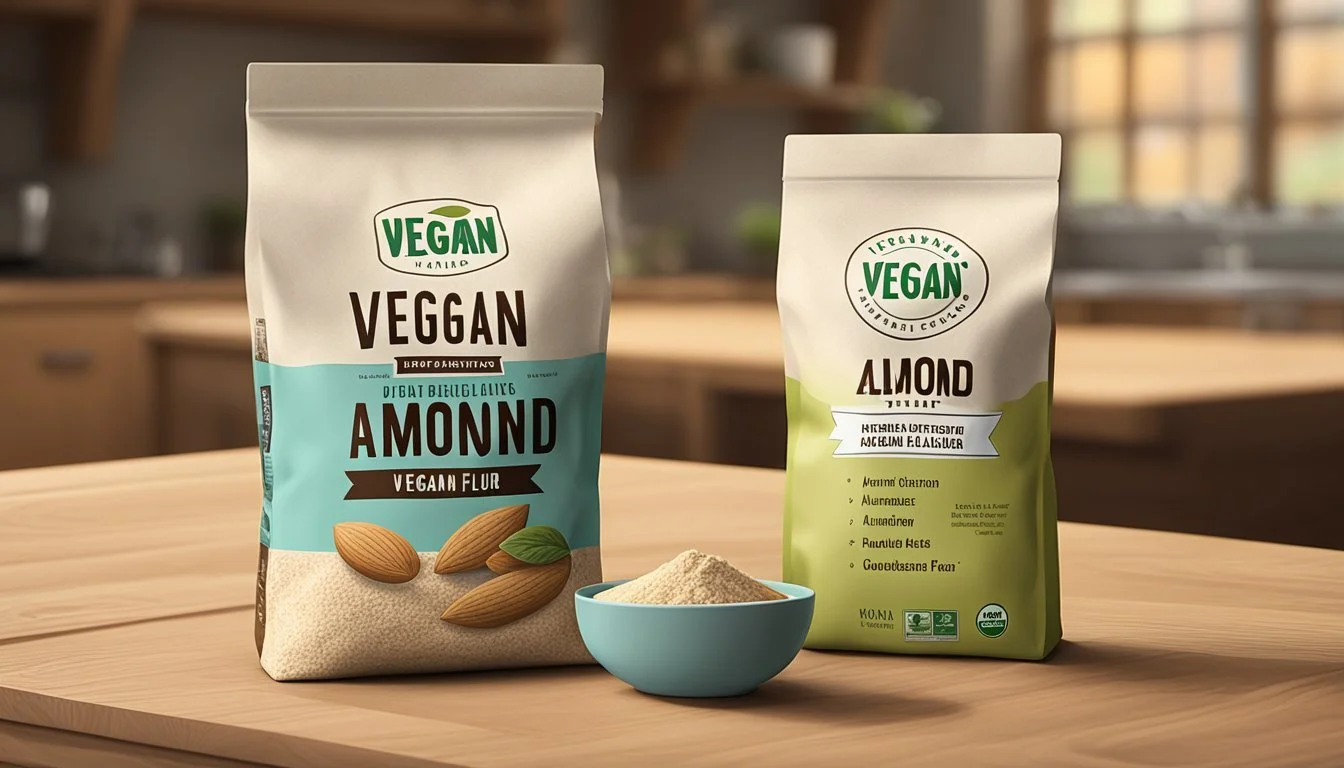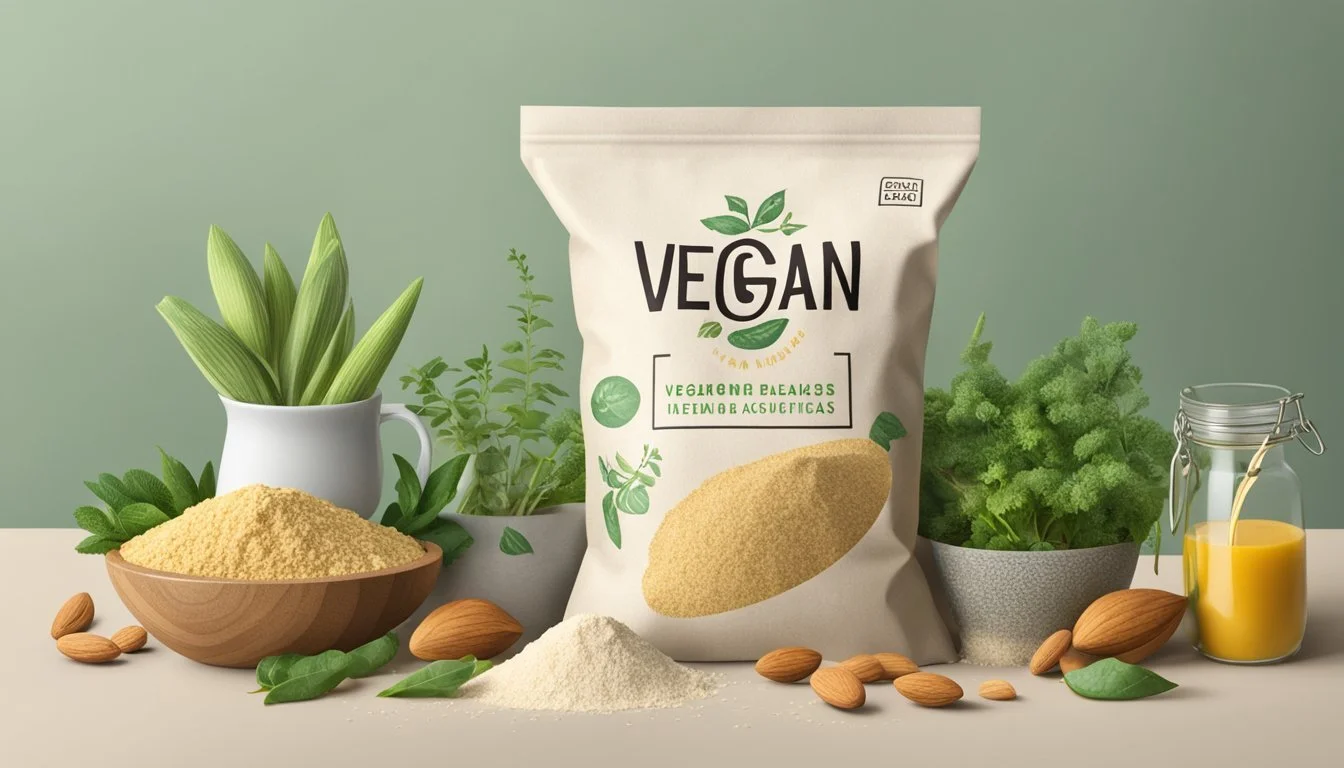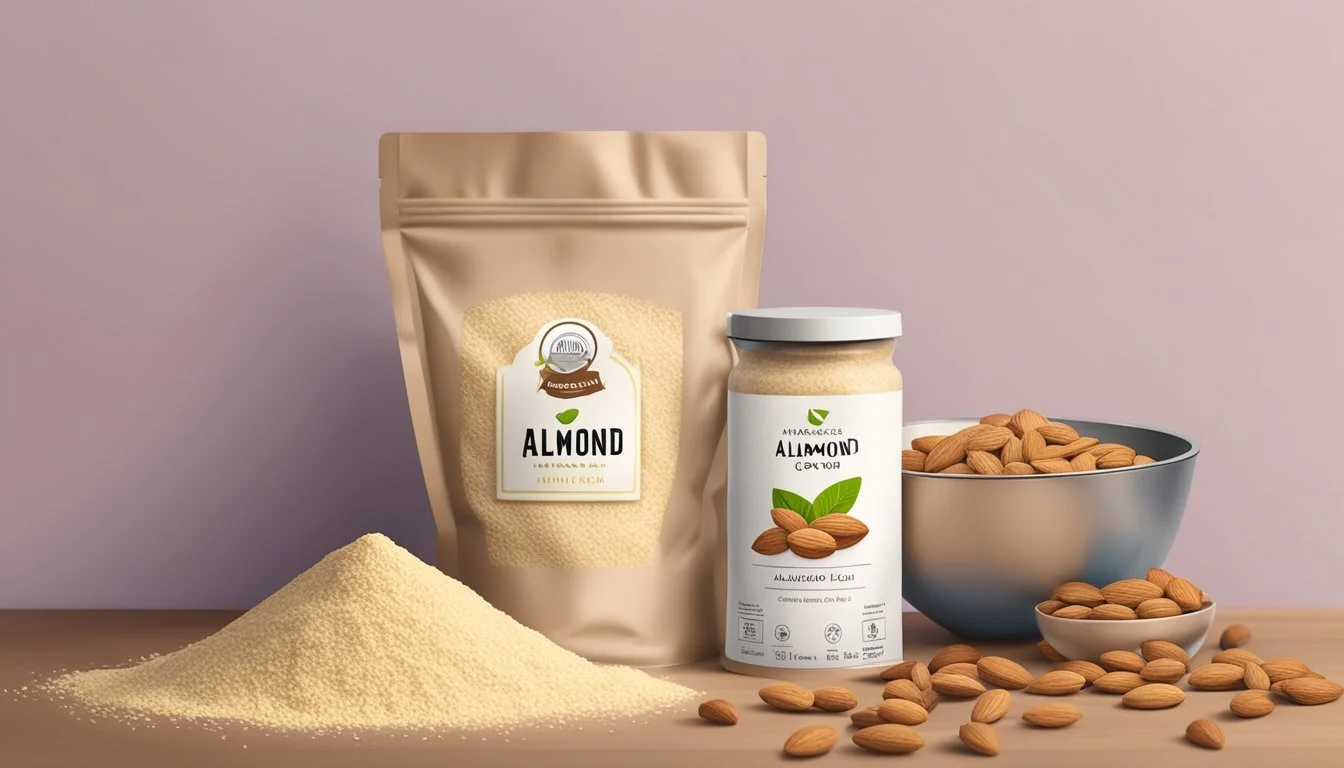Is Almond Flour Vegan?
Unveiling the Facts for Plant-Based Bakers
Almond flour is a plant-based product that is naturally vegan, made from ground almonds. It is a popular gluten-free alternative to wheat flour and features in many vegan recipes due to its nutritional profile and buttery flavor. Almond flour is high in protein and low in carbohydrates, making it a favored ingredient for those on vegan diets looking for ways to increase their protein intake.
As a versatile ingredient, almond flour is used in an array of vegan recipes, including baked goods like muffins, cakes, and cookies, as well as a substitute for breadcrumbs in savory dishes. Its ability to add a rich texture and taste to both sweet and savory dishes without the use of animal products makes it a staple in vegan pantries.
Considering its source and processing methods, almond flour typically involves no animal-derived ingredients or byproducts, which aligns with vegan principles. However, consumers interested in the broader ethical implications of their food choices might also consider the environmental impact of almond cultivation, such as water usage and bee population effects, while evaluating the suitability of almond flour within a vegan lifestyle.
What Is Almond Flour
Almond flour is a gluten-free baking ingredient known for its nutritious qualities and versatility in recipes. It is derived from ground, blanched almonds which means the skins are removed before grinding. This results in a fine powder that can be used as a healthier alternative to traditional wheat flour.
Nutritional Profile of Almond Flour
Almond flour is rich in protein and fiber while being lower in carbohydrates compared to traditional flour. It is a good source of healthy fats, which contribute to its slightly buttery taste. Typically, a quarter-cup serving contains the following nutrients:
Calories: 160-170
Protein: 6-7 grams
Fat: 14-15 grams
Carbohydrates: 6-8 grams
Fiber: 3-4 grams
These nutrients make almond flour a healthy ingredient suitable for those looking to maintain a balanced diet.
Almond Flour vs. Almond Meal
Although they are often used interchangeably, almond flour and almond meal have distinct differences mainly in texture and appearance. Almond flour is finely ground and has a lighter, more powdery texture, while almond meal is coarser and typically contains the skins of the almonds. The finer texture of almond flour is preferred for delicate baked goods like cakes and cookies, as it yields a softer crumb.
Culinary Uses
Almond flour's fine texture makes it an excellent ingredient for a variety of baked goods, including bread, cakes, and cookies. Because of its high-fat content, it adds moisture and richness to recipes. Almond flour is commonly used in gluten-free and paleo-friendly recipes, providing a nutritious and flavorful alternative to wheat flour.
Baking: Almond flour is suitable for gluten-free baking.
Recipes: Its use spans a wide range of recipes such as vegan butter, ricotta, and even buttermilk pancakes.
Texture: It lends a moist, buttery, and tender texture to baked goods.
Storage and Shelf Life
Proper storage is crucial to maintain the quality and extend the shelf life of almond flour. It should be stored in a cool, dark place to prevent spoilage from heat or light. To further extend its shelf life, almond flour can be stored in the refrigerator or freezer. In the pantry, almond flour can typically last up to a few months, while refrigerated or frozen storage can keep it fresh for up to a year. Always store almond flour in an airtight container to prevent moisture absorption and odors.
Is Almond Flour Vegan?
Almond flour, as a product derived entirely from almonds—a plant-based ingredient—is indeed vegan-friendly. It contains no animal products or byproducts, making it a suitable choice for anyone following a vegan diet.
Defining Vegan
Vegan refers to a diet or lifestyle that strictly avoids the use of animal products. This includes all forms of meat, dairy, eggs, and animal-derived substances. A vegan diet is plant-based and emphasizes whole foods, such as fruits, vegetables, grains, nuts, and seeds. Since almond flour is made by grinding blanched almonds into a fine powder, it fits perfectly within a vegan diet.
Advantages of Using Almond Flour
Almond flour offers multiple advantages, especially for individuals seeking health benefits and those with specific dietary requirements. It is a versatile ingredient fitting various dietary paradigms, rich in nutrients, and a perfect substitute for traditional wheat flour.
Health Benefits
Almond flour is a nutrient-dense option, providing high levels of protein, healthy fats, and dietary fiber. It is particularly rich in Vitamin E, magnesium, and iron, making it a valuable addition to one's diet for promoting overall health. Its low carbohydrate content also makes it a staple in low-carb, paleo, and keto diets.
Gluten-free: Ideal for those with gluten intolerance or celiac disease.
Low in cholesterol and saturated fat: May support heart health.
Dietary Restrictions Accommodated
Almond flour caters to a wide array of dietary restrictions without sacrificing taste or texture in culinary applications.
Grain-free: Suitable for grain-free diets, which can be part of paleo or other health-focused eating plans.
Vegan: Contains no animal products and is entirely plant-based.
Keto-friendly: With its high fat and low carbohydrate content, almond flour fits seamlessly into a keto lifestyle.
By meeting the needs of those with specific dietary choices or health conditions, almond flour is a functional and nutritious flour alternative that enhances the culinary experience for many.
Cooking and Baking with Almond Flour
When baking and cooking with almond flour, it's important to consider its unique properties to achieve the desired taste and texture in vegan recipes. Almond flour can provide a moist texture and buttery flavor, making it a go-to ingredient for many vegan dishes.
Replacing Traditional Flour
Almond flour can be a substitute for wheat flour in many recipes, especially for those seeking a gluten-free option. Here are specific substitution ratios and considerations:
Cakes and Muffins: Typically, replace wheat flour with almond flour at a 1:1 ratio, but since almond flour is denser, one might need to increase rising agents.
Bread and Pie Crusts: For yeast breads and flaky pie crusts, almond flour should be combined with other gluten-free flours like oat or coconut flour to enhance texture.
Cookies: Substitute almond flour fully or partially depending on the desired texture; it creates a tender, moist cookie.
Techniques and Tips
Almond flour requires different handling for optimal results in vegan recipes:
Mixing: Mix almond flour gently to prevent oil separation.
Dry Ingredients: Use a fork to break up clumps in the almond flour for an even mixture.
Oven: Almond flour baked goods often require lower cooking temperatures; an oven preheated to 350˚F (175˚C) is common.
Equipment: Parchment paper is essential to prevent sticking and to facilitate easy removal from pans.
Almond Flour in Vegan Recipes
Almond flour is a foundation for flavor and texture in vegan recipes:
Pancakes and Muffins: They benefit from almond flour's richness and pair well with maple syrup or vanilla extract.
Cakes and Breads: Vegan butter and almond flour create a buttery and moist consistency.
Cookies: Thumbprint cookies, made with almond flour, can achieve a buttery, crumbly texture without animal products. Vegan almond flour pancakes are known for their richness and slight nuttiness, complemented by additions like vanilla or fruit toppings.
Almond Flour for Special Diets
Almond flour is a highly versatile ingredient suitable for a variety of dietary preferences, particularly those requiring low-carb or grain-free options.
Keto and Paleo Friendly
Almond flour caters to both keto and paleo diets due to its low carbohydrate content and high-fat profile. It serves as a staple for those on a keto diet because it helps maintain ketosis, a state where the body burns fat for energy instead of carbs. For the paleo community, almond flour is favored as it mimics properties of traditional flours without grains, aligning with a diet that excludes processed foods and grains.
Grain-Free and Gluten-Free Alternatives
Individuals with gluten sensitivity or celiac disease can utilize almond flour as a grain-free and gluten-free alternative to traditional wheat flours. Its high protein content and healthy fats add nutritional value while maintaining the functional properties needed for baking and cooking. When compared to other gluten-free flours, like coconut flour, almond flour is less absorbent, requiring different ratios in recipes. It's also a direct substitute for gluten-free flour mixes in many cases, making it a convenient choice for home cooks and professional chefs alike.
Potential Challenges and Solutions
When utilizing almond flour in vegan recipes, chefs often encounter challenges regarding texture and moisture balance, as well as flavor pairing and optimal sweetness. The following subsections offer strategies to overcome these obstacles for successful baking with almond flour.
Dealing with Texture and Moisture
Almond flour tends to create a moist and dense texture in baked goods, which can differ significantly from the light and airy quality achieved with traditional wheat flour. Here are some solutions:
Baking Adjustments:
Egg Replacers: Use ingredients like flax or chia seeds mixed with water to bind the recipe and introduce springiness.
Leavening Agents: Increase the amount of baking powder or baking soda to help recipes rise.
Ingredient Proportions:
Almond Flour to Starch: Add a proportion of arrowroot or potato starch to lighten the texture.
Liquid Contents: Reduce or adjust liquid ingredients in the recipe to counteract the extra moisture from almond flour.
Flavor Pairing and Sweetness
Almond flour imparts a nutty flavor and natural sweetness, which can affect the overall flavor profile of the dish. Proper flavor pairing and sweetness adjustments are key.
Flavor Compatibility:
Spices: Cinnamon or nutmeg can complement the nutty taste of almond flour.
Add-ins: Incorporate chocolate chips or nuts for enhanced flavor and texture.
Sweetness Balance:
Sugar Alternatives: Use coconut sugar for a less refined sweetness that pairs well with the flavor of almond flour.
Fruit Purees: Integrate banana or apple purees not just for sweetness but also for moisture balance.
Utilizing these strategies can help bakers and cooks craft delicious vegan baked goods and dishes that maintain their intended texture and flavor profiles.
Almond Flour Details
Almond flour, a staple in many vegan recipes, offers a gluten-free and grain-free alternative to traditional flours. It is known for its nutritive properties, including high protein and healthy fats, making it a popular choice for vegan baking and cooking.
Types and Varieties
Almond flour typically comes in two main forms: blanched almond flour and almond meal. Blanched almond flour is made from almonds that have had their skins removed, resulting in a finer, lighter flour. It is favored for its smooth texture and is often used in recipes requiring a delicate crumb. Almond meal, on the other hand, includes the ground skins, giving it a coarser texture and a more robust flavor. These characteristics make almond meal more suitable for heartier recipes like muffins and crusts.
Blanched Almond Flour
Finely ground
Skin removed
Light in color
Ideal for cakes, pastries, and macarons
Almond Meal
Coarsely ground
Skin included
Darker, speckled appearance
Best for breads, cookies, and crumbles
Quality and Brands
The quality of almond flour can vary greatly, which directly affects the outcome of vegan recipes. When selecting almond flour, consumers should opt for brands that ensure a consistent, fine grind and prioritize non-GMO and organic almonds when available. Brands that specialize in gluten-free and grain-free products tend to have a strong reputation for providing high-quality almond flour. Users also look for almond flour that tastes fresh and mildly sweet, without any bitterness that could indicate rancidity.
High-Quality Indicators:
Consistent, fine texture
Fresh, mildly sweet flavor
Non-GMO and organic options
Brands often offer almond flour in various packaging sizes, ranging from small pouches for occasional bakers to bulk bags for frequent use. Here are some examples of brands with a reliable track record:
Brand A: Known for organic, finely-ground blanched almond flour.
Brand B: Offers a premium almond meal with a robust flavor.
Brand C: Specializes in non-GMO almond flours for all baking needs.
Choosing a reputable brand and understanding the type of almond flour required can significantly enhance a vegan dish's texture and taste.







